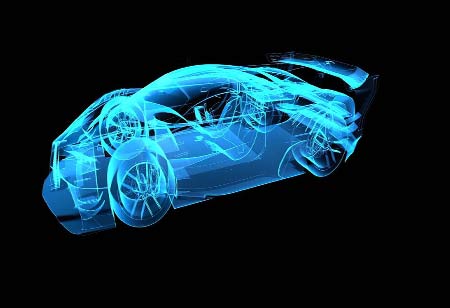THANK YOU FOR SUBSCRIBING
THANK YOU FOR SUBSCRIBING
Be first to read the latest tech news, Industry Leader's Insights, and CIO interviews of medium and large enterprises exclusively from Auto Tech Outlook

By
Auto Tech Outlook | Friday, December 02, 2022
Stay ahead of the industry with exclusive feature stories on the top companies, expert insights and the latest news delivered straight to your inbox. Subscribe today.
Longer driving distances make rural communities especially important. As rural drivers switch to electric vehicles from gasoline-powered vehicles, they will drive long distances without tailpipe emissions and with lower lifetime emissions, which is better for the climate.
FREMONT, CA: The rural region will benefit from an electric lifestyle. Regardless of the state, they reside in or the sort of vehicle they drive, rural drivers stand to gain the most by switching to an electric vehicle (EV). Even while each rural community in the nation has distinctive qualities, some commonalities contribute to the tremendous potential for car electrification benefits. These features include driving distances, the kinds of vehicles operated, and socioeconomics.
A switch to an electric vehicle can benefit rural drivers in the following ways:
EVs save fuel and maintenance in rural areas due to longer driving distances.
When a driver moves to an electric vehicle from a gasoline-powered vehicle, they can save up to twice as much fuel as their urban counterparts. In remote places, getting to jobs, hospitals, schools, and other destinations frequently requires lengthier drives for drivers. In the United States, low-income rural drivers log 59 percent more miles per year than high-income urban drivers, who travel distances that are, on average, 38 percent longer.
Vehicles in rural areas require more excellent maintenance due to longer travel lengths and older vehicles, but EVs require substantially less maintenance. The battery, motor, and related electronics require little to no routine maintenance is a critical factor. There are more moving components in an EV powertrain, which has roughly 20, compared to conventional internal combustion drivetrains, which can have up to 2,000 moving parts. For instance, EVs lack motor oil and spark plugs, and regenerative braking significantly reduce brake wear.
Clean vehicle technologies will benefit rural drivers and rural economies. With electric vehicles replacing internal combustion engines on rural roads, consumers will save on fuel and maintenance costs.
Switching to an EV in rural areas results in larger fuel savings.
A higher percentage of older vehicles are found in rural areas. Older and larger vehicles are less fuel efficient, so switching to an EV comparable to their size will likely save more fuel. Policies to encourage EV purchases are needed for rural households.
Home charging is popular with rural drivers.
Since most EV charging takes place at home and single-family homes are far more common in rural areas than multi-unit buildings, many rural drivers find home charging a practical option. Despite the increased availability of home charging, many households still face obstacles because there is no publicly accessible charging infrastructure. Around the nation, initiatives are being made to install charging stations in workplace parking lots, shopping centers, and along highways.
The cost of electric vehicles is falling, and more models are available.
Electric vehicles of every type, in a wide range of sizes, designs, and costs, are becoming more prevalent. There are currently roughly 20 models available for purchase in the US. Still, the industry is growing quickly, and up to 100 EV vehicles, many of which will be SUVs and pickup trucks, are anticipated by 2024.
Climate change impacts rural communities.
Rural areas are particularly susceptible to the extreme events that global warming is making more intense and frequent. All over the country, communities are at risk from extreme events like hurricanes, wildfires, and floods caused by heavy precipitation. However, rural communities are particularly vulnerable because of their physical isolation, lack of redundant roads, a higher proportion of low-income households, and aging population. A vital component of the strategy to combat climate change and its effects is to increase the use of electric vehicles (EVs) to reduce greenhouse gas emissions from transportation.
 Copyright © 2025 AutoTech Outlook. All Rights Reserved | Privacy Policy | Subscribe | Sitemap | About us | Feedback Policy | Editorial Policy
Copyright © 2025 AutoTech Outlook. All Rights Reserved | Privacy Policy | Subscribe | Sitemap | About us | Feedback Policy | Editorial Policy 



